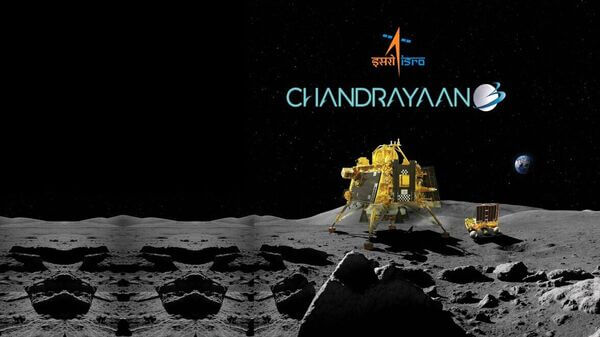The spacecraft made history as the first to land on the south pole of the moon. India became only the fourth country to make a soft landing on the moon

Chandrayaan-3 successfully landed in the South Pole region of the Moon. The spacecraft made history as the first to land on the south pole of the moon. India became only the fourth country to make a soft landing on the moon.
Chandrayaan-3 was launched on July 14, 2023 on the Indian LVM3 launcher. After a 40-day journey that began from the Satish Dhawan Space Center in Sriharikota, the Chandrayaan-3 mission of the Indian Space Research Organization (ISRO) successfully soft-landed on the Moon at 15:34 Israel time on August 23.
The propulsion module carried the lander/lander to lunar orbit and then separated from them.
ISRO started the automatic landing sequence twenty minutes before landing and it used its computers and logic to attempt a soft landing on the moon.
Chandrayaan-3 consists of a lander (Vikram), a landing vehicle (Peregian), and a propulsion/cruiser module. The lander has 4 variable thrust landing engines and stronger landing legs compared to Chandrian-2, and they brought it to a more successful landing.
The landing vehicle has 6 wheels, weighs 26 kg and has a maximum travel range of 500 meters
Mission objectives
The Chandrayaan-3 mission is a follow-up to the Chandrayaan-2 mission in 2019, when the Vikram lander crashed on the lunar surface. The main goal of the mission is simple - to demonstrate the space agency's ability to complete a soft landing on the moon.
The objectives of the post-landing operation are to deploy the lander to explore the lunar surface and conduct scientific experiments
Lander instruments: APXS and LIBS to study the composition and minerals of the lunar soil
Landing instruments: ChaSTE and ILSA to study the thermal and seismic properties
The Mekapet instrument: SHAPE for studying spectral measurements of the Moon. Through them, the Indians expect to make new discoveries about the composition of the lunar surface, the existence and amount of water ice, impact history, and the development of the moon.
With the mission, India joined a small and exclusive club of countries that managed to land a soft landing on the moon. So far the club has three members - the United States, the Soviet Union and China.
The successor of the Soviet Union Russia failed to land the Luna 25 spacecraft on Sunday this week On the moon, after Russia's 50-year hiatus in attempts to land spacecraft on the moon.

3 תגובות
Keep dreaming that one day someone can cross the Earth's mantle and let's not talk about reaching the moon.. Hahaha everyone is being worked on with fake eyes... Everything is filmed in Hollywood studios
lies and falsehood
The success of the Indian landing highlights the Russian humiliation with the failure of Luna 25 on the moon. The Russian space program basically collapsed.